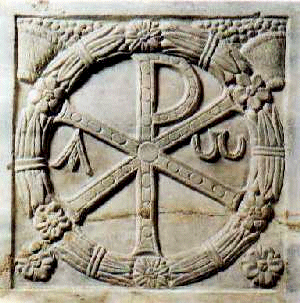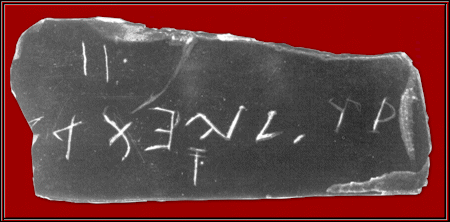

 |
Abram leaves UR circa 2000 BC
Moses circa 15261406 BC
The alphabets found in North America are understood to have been left by traders from Europe. During the time of Abraham the writing of most people was hieroglyphics or ideograms along the Mediterranean. Egyptian hieroglyphics, the Phaistos Disk, Linear A, and Linear B are good examples of hierogrammatic and ideogrammatic writing. The writing of the Sumerians dating to 3000 B. C. gradually changed over time and were made more symbolic than representations of the idea. The picture of a the pudendum of a woman representing a woman was something that was a picture that evolved into a symbol. The picture of a bull stood for the letter "a" in the proto-Canaanite alphabet and later evolved into letters in various alphabets. The community of Çatal Hüyük in Anatolia that dates to at least 6000 to 7000 B. C. has the curious horns of a bull that are in what is interpreted to be a place of worship. The four horns on the altar of the Hebrew Temple may have some distant relation to these horns. In Sumer the King's list pre-dates the Great Flood and it is apparent that writing must have existed at least before 12,500 years ago. If the King's list is correct then man goes back into antiquity to over 100,000 years ago and kept written records during that time. The eradication of all of civilization no doubt took most of the records.
 |
Hebrew inscription found at Bat Creek, Tennessee dating to 135 B. C.

EXAMPLE OF ETHIOPIC WRITING

Bibliography
Chadwick, John, Documents in Mycenaean Greek, Cambridge at the University Press, Cambridge, London, 1973.
Fell, Barry, Bronze Age America, Little Brown and Company, Boston, 1982.
Fell, Barry, America B. C., Pocket Books, New York, 1989.
Fell, Barry, Saga America, Times Books, New York, 1980.
Gusmani, Roberto, Neue Epichorische Schriftzeugnisse Aus Sardis (1958-1971), Harvard University Press, Cambridge, MA, 1975.
Packard, David, Minoan Linear A, University of California Press, Berkeley, CA, 1974.